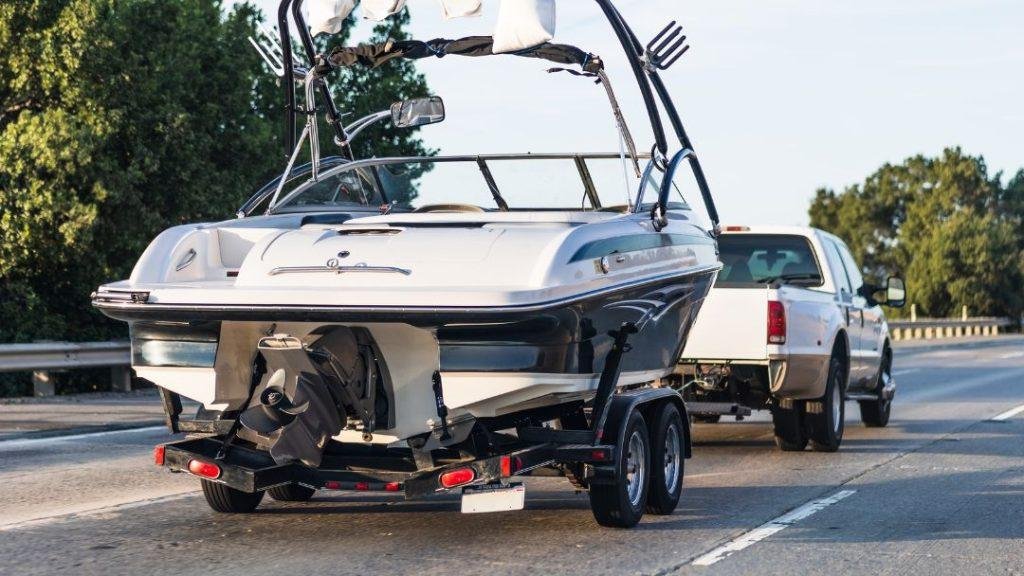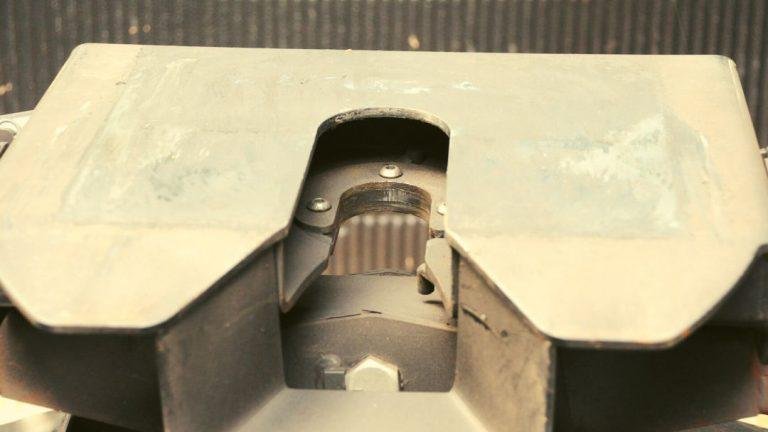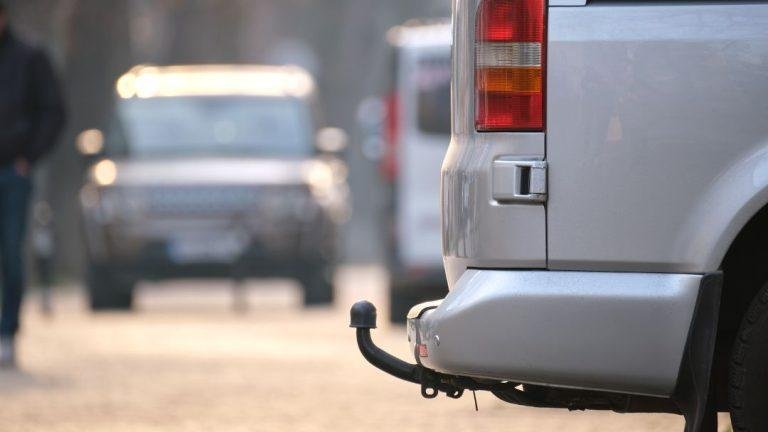Towing capacity cannot be increased beyond the manufacturer’s specifications. Increasing the towing capacity on a vehicle is not possible due to the limits set by the manufacturer.
However, there are ways to maximize the existing towing capacity of a vehicle by ensuring proper maintenance, using the correct hitch, and distributing the weight evenly. With these precautions, you can safely utilize the maximum towing capacity that your vehicle is designed for.
It is essential to remember that exceeding the towing capacity can result in damage to the vehicle and compromise safety on the road. Therefore, it is crucial to understand and adhere to the manufacturer’s recommended towing capacity to ensure a smooth and secure towing experience.
Understanding Towing Capacity
Understanding towing capacity is crucial for safe towing, but can it be increased? Discover practical tips and strategies to enhance your vehicle’s towing capabilities. Conquer the road with confidence and make the most of your towing adventures.
Definition And Explanation Of Towing Capacity
Towing capacity refers to the maximum weight a vehicle can safely tow. It is an essential specification to consider when planning to transport heavy loads or tow trailers. Understanding the towing capacity of your vehicle is crucial to ensure safe and efficient towing.
Let’s dive deeper into this topic and explore the factors that determine towing capacity.
Factors That Determine Towing Capacity Of A Vehicle:
Determining the towing capacity of a vehicle involves several factors that influence its ability to haul heavy loads. These factors include:
- Manufacture specifications: Vehicle manufacturers provide specific guidelines regarding towing capacity. These specifications outline the maximum weight a vehicle can safely and effectively tow. It is vital to consult your vehicle’s owner’s manual or contact the manufacturer directly to obtain accurate information.
- Engine power: The power of your vehicle’s engine plays a significant role in determining towing capacity. A more powerful engine tends to have a higher towing capacity as it can generate the necessary torque to handle larger loads.
- Transmission and gear ratio: The type of transmission and gear ratio of your vehicle can impact its towing capacity. Vehicles equipped with a transmission specifically designed for towing, such as a heavy-duty or tow package transmission, tend to have a higher towing capacity. Additionally, vehicles with lower gear ratios can provide more pulling power, making them better suited for towing.
- Suspension and braking system: A vehicle’s suspension and braking system are crucial for safe towing. Upgraded or heavy-duty suspension components, such as reinforced springs or adjustable air suspension, can improve towing capabilities. Similarly, vehicles equipped with enhanced braking systems, such as larger brakes or a brake controller, can provide better control while towing heavy loads.
- Chassis and frame strength: The structural strength of a vehicle’s chassis and frame greatly influences its towing capacity. Vehicles with a robust chassis and frame construction can handle higher towing loads, as they offer increased stability and support.
- Cooling system: Towing generates additional heat, placing additional stress on the vehicle’s engine and transmission. An efficient cooling system, including a heavy-duty radiator and transmission cooler, helps prevent overheating and ensures optimal performance while towing.
- Additional features: Certain features, such as a towing package or trailer sway control, can enhance a vehicle’s towing capacity. Towing packages often include upgrades like a towing hitch or wiring harness, designed to facilitate safe and efficient towing.
Understanding these factors is essential to determine the towing capacity of your vehicle accurately. It is important to remember that exceeding the towing capacity can lead to unsafe driving conditions, increased wear and tear on the vehicle, and potential damage to the engine or transmission.
Always prioritize safety and consult the manufacturer’s specifications before towing any loads.
Now that we have explored the concept of towing capacity and its determining factors, you can make informed decisions when it comes to towing heavy loads with your vehicle. Remember, adhering to the manufacturer’s guidelines and ensuring your vehicle is equipped to handle the task will allow for a safe and successful towing experience.

Technique 1: Strengthening The Chassis
Increase your towing capacity with technique 1: strengthening the chassis. Upgrade your vehicle’s structure for enhanced towing capabilities.
Enhancing the chassis of your vehicle is one technique that can significantly improve its towing capacity. By reinforcing key components, you can provide additional support and stability, allowing your vehicle to handle heavier loads without compromising safety or performance. Here are the key components that you should focus on reinforcing:
- Frame: Strengthening the frame of your vehicle is crucial for increasing towing capacity. A sturdy frame provides a solid foundation to handle the added stress of towing heavy loads. Reinforcements such as additional cross members, bracing, or thicker steel plates can be added to strengthen the frame.
- Suspension: Upgrading the suspension system can help improve towing capacity by enhancing stability and reducing sag. Consider installing heavy-duty shocks, springs, or airbags designed to handle the extra weight. This upgrade can help prevent the rear of your vehicle from sagging when towing heavy loads, ensuring better control and maneuverability.
- Axles: The axles play a vital role in supporting the weight of your vehicle and the load it’s towing. Upgrading to higher-rated axles can increase towing capacity. Additionally, you may want to consider installing a rear axle with a higher gear ratio to provide better torque and power when towing.
- Brakes: Towing heavier loads require stronger braking power to ensure safe stopping. Upgrading to larger brakes and adding trailer brake controls can improve your vehicle’s ability to stop efficiently when towing. This upgrade is essential for maintaining control and reducing the risk of accidents.
- Cooling system: Towing puts extra strain on your vehicle’s engine and transmission, leading to increased heat generation. Strengthening the cooling system, such as installing an upgraded radiator or transmission cooler, can help dissipate the excess heat and prevent overheating. This upgrade ensures that your vehicle can handle the added load without suffering any damage to its vital components.
By strengthening these key components, you can significantly increase your vehicle’s towing capacity. However, it is crucial to consult with a professional mechanic or specialist who can recommend the best upgrades and modifications for your specific vehicle make and model.
Remember to always follow the manufacturer’s guidelines and ensure that any modifications comply with safety standards and regulations. With a reinforced chassis, you can confidently tackle heavier loads and enjoy a safer towing experience.
Technique 2: Upgrading Suspension Systems
Increase your towing capacity with technique 2: upgrading suspension systems, a proven method to enhance your vehicle’s performance and handle heavier loads. Discover how to optimize your suspension for safer and more efficient towing.
Importance Of Suspension Systems In Towing Capacity
Proper suspension is vital for maximizing your vehicle’s towing capabilities. A well-designed suspension system ensures that your vehicle remains stable, improves handling, and minimizes wear and tear on various components. Upgrading suspension systems can significantly enhance your towing experience.
Types Of Suspension Upgrades That Can Enhance Towing Capabilities
There are several types of suspension upgrades you can consider to improve your vehicle’s towing capacity:
- Heavy-duty shocks and struts: Installing heavy-duty shocks and struts can offer increased stability and control when towing heavy loads. These upgrades help to minimize bouncing and swaying.
- Air suspension systems: Air suspension systems use air springs to provide a more adaptable and adjustable suspension setup. They allow you to adjust the ride height and stiffness, which can be advantageous when towing varying loads.
- Helper springs: Helper springs, also known as overload springs or auxiliary springs, provide extra support to the rear suspension when under heavy loads. These springs prevent excessive sagging and help maintain a level ride height.
- Leaf spring upgrades: Upgrading your leaf springs can provide improved load-carrying capacity and stability. Consider installing heavy-duty or progressive-rate leaf springs to enhance your vehicle’s towing capabilities.
- Upgraded sway bars: Sway bars, also known as anti-roll bars, reduce body roll when turning or cornering. Upgrading to thicker sway bars can minimize sway and improve stability while towing.
Remember, it is essential to consult with a professional mechanic or suspension specialist before making any suspension upgrades. They can help assess your vehicle’s specific needs and recommend the most suitable upgrades for increasing towing capacity.
Technique 3: Enhancing Engine Performance
Enhancing engine performance is a key technique to increase towing capacity. By optimizing components and implementing modifications, you can significantly improve your vehicle’s power and strength for more efficient towing capabilities.
Role Of Engine Power In Towing Capacity
When it comes to towing heavy loads, engine power plays a crucial role in determining a vehicle’s towing capacity. The stronger the engine, the more weight it can handle effortlessly. However, if you find yourself in a situation where your vehicle’s engine power is not sufficient to tow the load you desire, there are techniques you can employ to increase your engine’s performance.
Let’s explore one such technique below.
To improve your vehicle’s engine power for better towing capabilities, consider the following techniques:
- Cold air intake: By installing a cold air intake system, you can ensure that your engine receives cooler air during combustion, resulting in increased power output. This modification optimizes airflow, allowing your engine to perform more efficiently and generate more horsepower.
- Exhaust system upgrade: Upgrading your vehicle’s exhaust system can enhance engine performance and boost towing capacity. A free-flowing exhaust with larger diameter pipes helps in minimizing back pressure, allowing exhaust gases to escape more easily. As a result, this improves engine efficiency and increases power output.
- Performance tuning: Utilizing performance tuning software or devices, you can reprogram your vehicle’s engine control unit (ECU) to optimize fuel delivery, ignition timing, and other parameters. This process improves engine performance, thereby increasing towing capacity.
- Forced induction: Employing superchargers or turbochargers can significantly enhance engine power and towing capabilities. These devices force more air into the engine, which allows for better combustion and increased horsepower. As a result, your vehicle becomes more capable of handling heavier loads.
- Upgraded ignition system: Installing an upgraded ignition system with high-performance spark plugs and ignition coils can improve engine power output. This enhancement ensures better fuel combustion, leading to increased horsepower and torque, ultimately benefiting your towing capacity.
Remember, it is essential to consult with a professional mechanic or automotive specialist before making any modifications to your vehicle. They can guide you in selecting the most suitable enhancements based on your specific needs and ensure that the modifications are done correctly and safely.
By employing these techniques, you can enhance your vehicle’s engine power and unlock its full towing potential. Whether you’re towing a trailer, or camper, or hauling heavy cargo, these enhancements will provide the additional performance you need for a smoother and more efficient towing experience.
Technique 4: Upgrading Transmission Systems
Increase the towing capacity of your vehicle by upgrading its transmission systems. By using technique 4, you can improve the power and performance of your vehicle for towing heavy loads. Enhance your towing capabilities and take on more challenging tasks with ease.
How Upgrading Transmissions Can Boost Towing Capacity
Upgrading your vehicle’s transmission system can significantly improve its towing capacity. By enhancing the power and performance of this critical component, you can handle heavier loads with ease. Let’s explore the types of transmission upgrades that can help you achieve improved towing performance:
Types Of Transmission Upgrades For Improved Towing Performance:
- Reprogramming the transmission control unit (TCU): Upgrading the tcu software allows for better gear shifting patterns and increased torque, resulting in enhanced towing capabilities.
- Installing a transmission cooler: A transmission cooler helps regulate the temperature of the transmission fluid, preventing overheating during towing. This upgrade improves the transmission’s durability and efficiency.
- Upgrading to a heavy-duty torque converter: A heavy-duty torque converter provides increased torque multiplication, ensuring better towing capacity and smoother operation under heavy loads.
- Replacing the stock torque converter with a high-stall performance converter: This modification allows the engine to generate more power at lower RPMs, translating to improved towing ability.
- Installing an auxiliary transmission oil cooler: Supplementing the factory transmission cooler with an additional one helps maintain optimal fluid temperature during towing, reducing the risk of transmission overheating.
- Upgrading to a higher gear ratio: Changing to a higher gear ratio allows the engine to run at lower rpms when towing, reducing strain and improving fuel efficiency.
These transmission upgrades can significantly enhance your vehicle’s towing performance, allowing you to handle heavier trailers or loads with ease. However, it’s essential to consult with a professional mechanic or specialist to ensure the upgrades are appropriate for your specific vehicle and towing needs.
Remember, investing in the right transmission upgrades not only increases your towing capacity but also enhances your overall driving experience.
Technique 5: Installing Weight Distribution Hitches And Sway Control
Increase your towing capacity by installing weight distribution hitches and sway control techniques. These effective measures ensure stability and safety while towing heavy loads, giving you peace of mind on the road.
The Importance Of Weight Distribution For Safe Towing
Failure to properly distribute weight when towing a heavy load can have serious consequences. It can lead to an unstable and unsafe driving experience, increasing the risk of accidents on the road. To mitigate these dangers, it is crucial to understand the importance of weight distribution for safe towing.
Installing weight distribution hitches and sway control devices is a proven method to enhance towing stability and ensure a safe journey. These devices work in tandem to distribute the weight of the load evenly, minimizing swaying and improving control for the driver.
Here’s how weight distribution hitches and sway control devices can make a difference:
- Improved weight distribution: Weight distribution hitches redistribute the weight from the rear of the towing vehicle to both the front axle and the trailer. This helps to level the vehicle, preventing it from sagging at the back and creating a more balanced towing setup.
- Enhanced stability: By maintaining a more level ride height, weight distribution hitches improve stability, reducing the risk of trailer sway caused by wind gusts or passing vehicles. This enables the driver to maintain better control over the towing vehicle and trailer, ensuring a safer and more comfortable towing experience.
- Minimized sway: Sway control devices, often integrated with weight distribution hitches, further enhance stability by reducing the lateral movement of the trailer. These devices use friction or other mechanisms to counteract trailer sway, preventing it from escalating and potentially causing an accident.
- Increased braking effectiveness: Proper weight distribution and sway control also improve the performance of the tow vehicle’s braking system. With a balanced load and reduced sway, the effectiveness of braking is optimized, allowing for safer stops and decreased braking distances.
- Reduced tire wear: Uneven weight distribution can cause tires to wear unevenly, leading to premature tire failure. With weight distribution hitches and sway control devices, the load is evenly distributed across all tires, prolonging the life of your tires and reducing the risk of blowouts while on the road.
Weight distribution hitches and sway control devices play a critical role in enhancing towing stability and ensuring a safe journey. By distributing weight properly and minimizing sway, these devices provide drivers with improved control and peace of mind. Investing in this technology is not only essential for safe towing but also for safeguarding the well-being of yourself, your passengers, and others on the road.
Frequently Asked Questions
What Happens If You Exceed Towing Capacity?
If you exceed towing capacity, your vehicle may experience serious damage, reduced control, and increased risk of accidents.
Can A Hitch Increase Towing Capacity?
No, a hitch does not increase towing capacity. Towing capacity is determined by the vehicle manufacturer and is based on factors like engine strength, chassis design, and braking system. The hitch is simply the point of connection between the vehicle and the trailer.
It distributes the weight of the trailer and helps with stability during towing. A stronger hitch may offer more durability and towing options, but it does not directly increase the vehicle’s towing capacity. It is crucial to consult the vehicle’s owner’s manual or contact the manufacturer to confirm the specific towing capacity for your vehicle.
This ensures safe and efficient towing while avoiding potential damage to the vehicle or compromising safety on the road.
What Is The 80% Rule For Towing?
The 80% rule for towing states that your trailer should not weigh more than 80% of the total weight of your towing vehicle. This guideline helps ensure safe and stable towing. By staying within this limit, you can maintain proper control of your vehicle and prevent excessive strain on your engine, brakes, and suspension system.
Exceeding the 80% limit can lead to difficulties in accelerating, braking, and maneuvering, which can be hazardous on the road. It’s essential to calculate the weight of both your towing vehicle and trailer accurately before embarking on any towing journey.
This will help you determine whether or not you are within the recommended towing limit. Adhering to the 80% rule promotes safety and helps prevent accidents while towing.
What Dictates A Truck Towing Capacity?
The towing capacity of a truck is determined by several factors. These include the strength of the truck’s chassis and suspension, as well as the power of its engine and transmission. Additionally, the truck’s axle ratio, gearing, and braking system also play a role in its towing capacity.
The weight distribution of the towed load is important as well. The manufacturer sets a maximum towing capacity based on these factors, and it is not advisable to exceed this limit. Regular maintenance and servicing of the truck, including the cooling system and brakes, also contribute to its towing capacity.
To ensure safe towing, it is essential to follow the manufacturer’s recommendations and guidelines for your specific truck model.
Conclusion
Increasing towing capacity is a common concern for many individuals who rely on their vehicles to haul heavy loads. While there are various modifications and upgrades that can potentially enhance towing capabilities, it is essential to approach these modifications with caution.
Proper research, consultation with professionals, and adherence to safety guidelines are critical to ensure optimal performance and minimize any risks. Understanding the limitations of your vehicle’s design and engineering is crucial. It is also important to consider the impact that increased towing capacity may have on other aspects, such as braking, suspension, and overall stability.
Thus, before making any modifications, thoroughly assess your vehicle’s capabilities and consult with experts to determine the most suitable options. Moreover, prioritizing regular maintenance, such as servicing the brakes, engine, and transmission, can greatly impact your towing capacity. By keeping your vehicle in top shape, you can maximize its performance and ensure safer towing experiences.
Ultimately, increasing towing capacity requires careful consideration, research, and adherence to safety standards. With the right approach, modifications can potentially enhance your vehicle’s capabilities, allowing you to tackle heavier loads with confidence. Remember to prioritize safety and consult professionals to make informed decisions that align with your specific needs.





